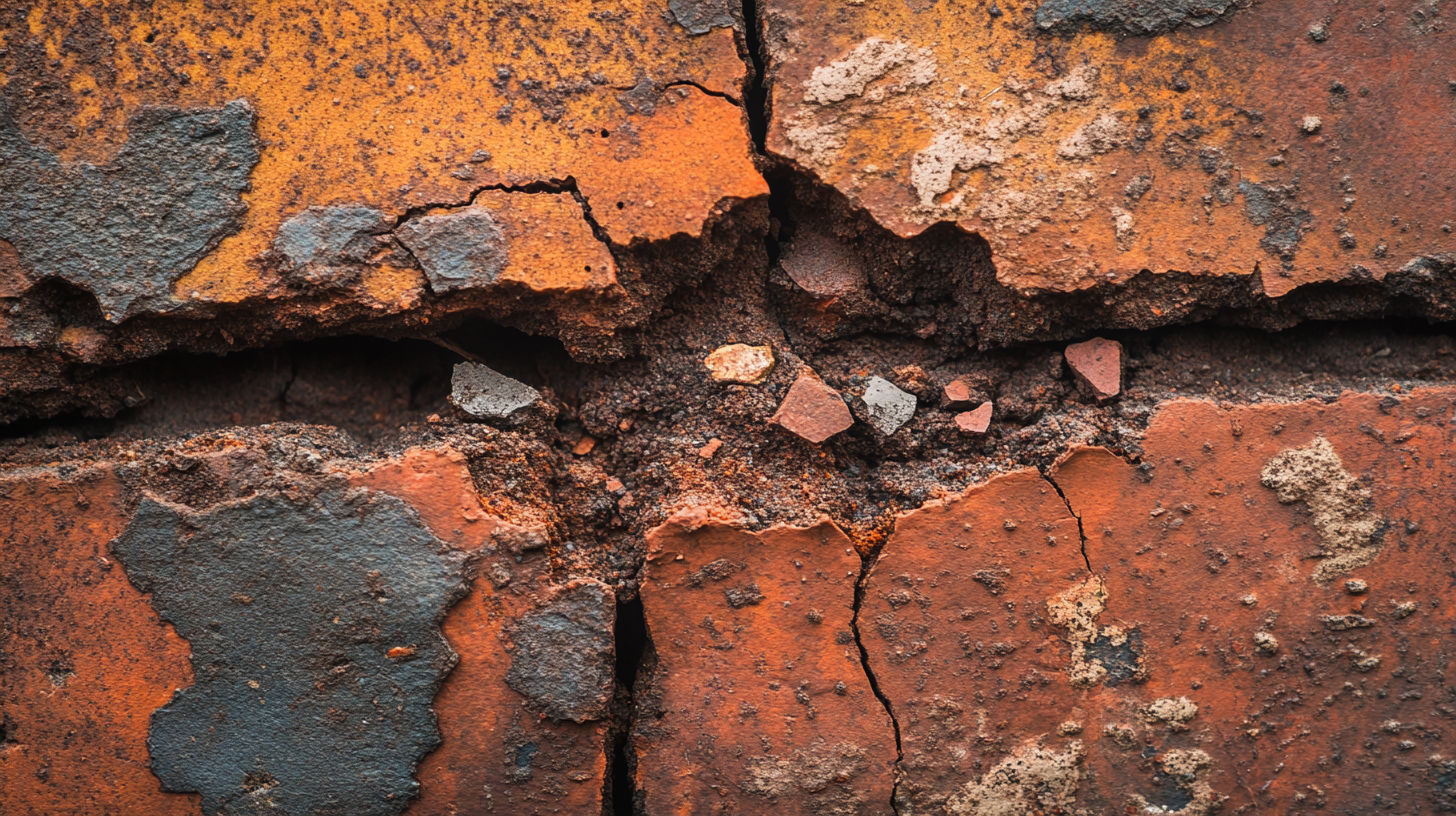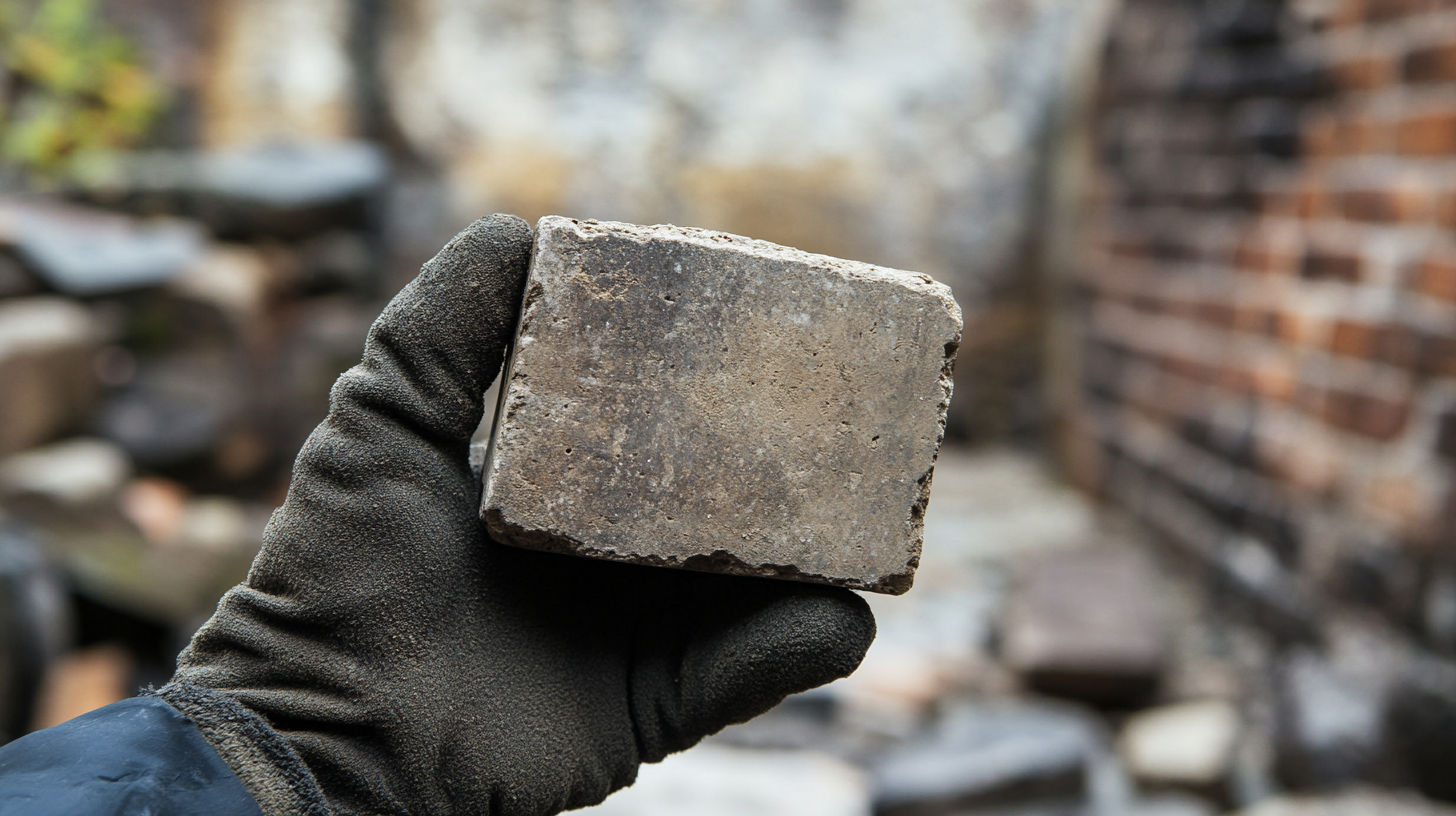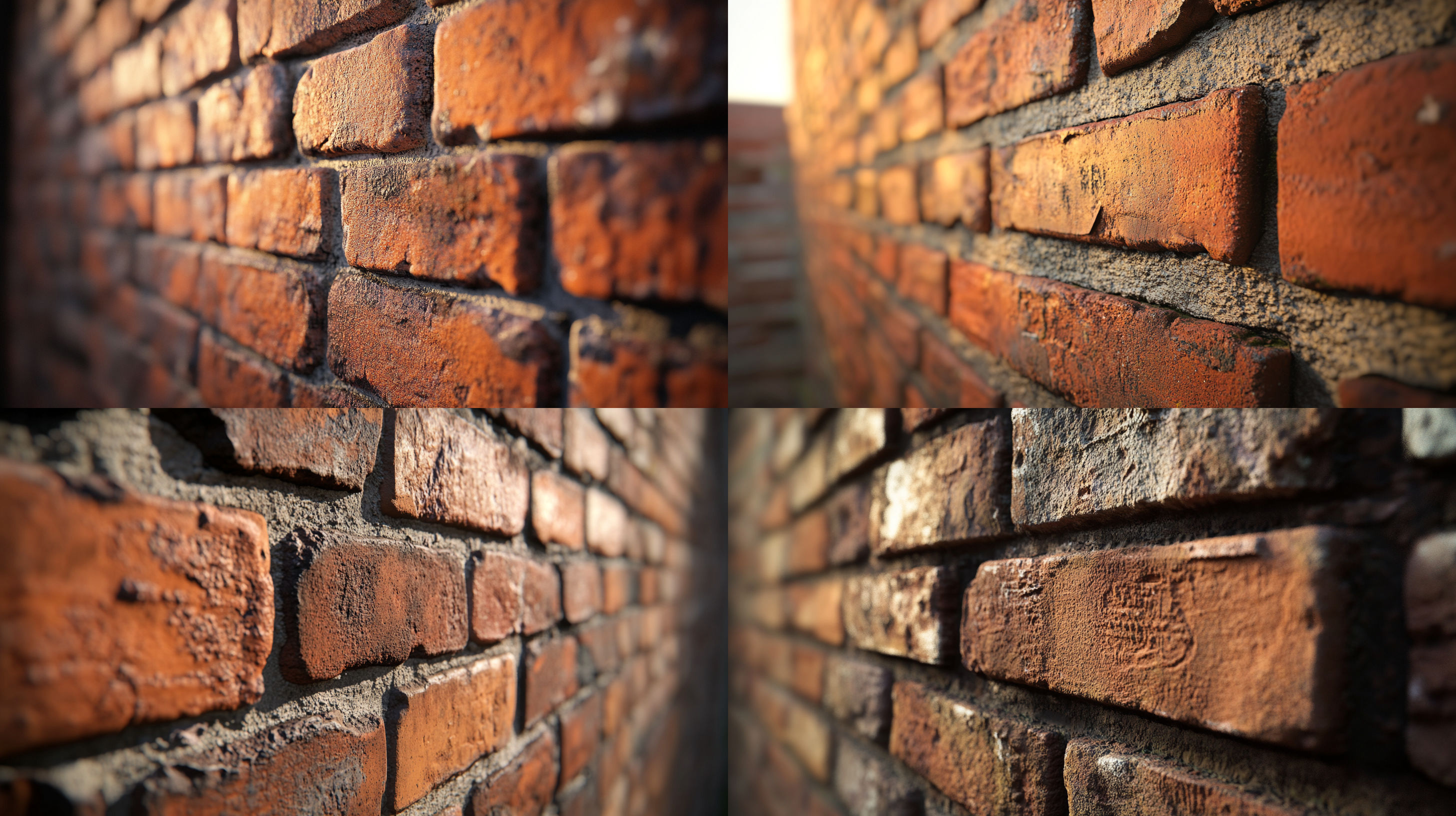Introduction to Antique Brick Identification
Antique bricks are more than just building materials – they’re historical artifacts that can provide insights into local industry, construction methods, and architectural trends of bygone eras. From hand-molded colonial specimens to early machine-made bricks of the Industrial Revolution, each type has distinctive features that help determine its age, origin, and potential value.
Unlike modern mass-produced bricks with their uniform appearance, historic bricks exhibit unique characteristics that reflect their production methods, materials, and age. Learning to identify these features not only helps in authentication but also enhances appreciation for these tangible pieces of architectural history.
Key Facts About Antique Bricks
Different regions used distinct clay sources resulting in unique colors and textures
Prior to 1870, most American bricks were hand-molded in wooden forms
Properly identified antique bricks can sell for $1-$5 per brick, with rare specimens fetching significantly more
5 Key Characteristics for Identifying Historic Bricks
1. Size and Dimensions
Brick dimensions have changed significantly over time, making size one of the most reliable indicators of age. Historic bricks were typically larger than modern counterparts, and their dimensions varied by region and time period.
- Pre-1900 bricks: Often larger, commonly measuring around 8⅝" × 4" × 2½"
- Modern standard bricks: Typically smaller at 8" × 3⅝" × 2¼"
- Regional variations: English bond patterns used different sizes than American running bond
The standardization of brick sizes is relatively recent. If you find bricks that are noticeably larger than modern ones, it’s a strong indication they may be historic.
2. Texture and Surface Characteristics
The surface texture of a brick can reveal much about its manufacturing process and age:
- Hand-molded bricks (pre-1870s): Show uneven textures, finger marks, and irregular striking patterns where excess clay was removed
- Early machine-made bricks: More uniform but still show distinctive pressing patterns
- Sand-struck vs. water-struck: Different molding methods created distinctive surface textures
Running your hand over an old brick often reveals tactile clues about its production method that aren’t present in modern, uniform bricks.
3. Presence of Iron Spots and Material Consistency
Historic bricks often contain visible mineral inclusions that modern manufacturing processes would remove:
- Iron spots: Small dark spots or flecks indicating iron content in the clay
- Material inconsistency: Varied colors, textures, and inclusions throughout the brick body
- Aggregate visibility: Small stones or other materials visible in the brick’s body
As one expert from the IDS Masonry notes, these iron spots “are one of the most telltale signs of a historic brick” and resulted from traditional firing methods.
4. Maker’s Marks and Brick Stamps
Many historic brickmakers marked their products with distinctive stamps or impressions:
- Company names: Often stamped or embossed on the face of the brick
- Initials: Manufacturer’s initials were common on 19th-century bricks
- Location marks: Some indicated the city or region of manufacture
- Frog depressions: Indentations on one face of the brick, sometimes containing marks
These identifying marks are particularly valuable for collectors and can significantly increase a brick’s value. The BroCross Brick Index maintains an extensive catalog of brick maker’s marks organized alphabetically.
5. Shape Variations and Firing Characteristics
The shape and firing characteristics of old bricks reflect their manufacturing process:
- Warping and irregularities: Non-uniform shapes indicate hand-forming and older kiln technology
- Uneven firing: Color variations within a single brick (darker core, lighter exterior)
- Distinctive colors: Regional clay compositions produced characteristic colors
- Hardness variations: Historic bricks are often softer than modern ones due to lower firing temperatures
These imperfections aren’t manufacturing defects but rather authentic signs of historic production methods.
Dating Old Bricks by Time Period
Evolution of Brick Manufacturing in America
- 1600s-1700s
Colonial Hand-Molded Bricks
Early American bricks were entirely hand-crafted. Look for irregular shapes, finger impressions, and larger dimensions. Bricks were often fired in temporary "clamp" kilns, resulting in uneven firing and varied coloration. - 1800-1870
Early Industrial Bricks
This transitional period saw continued hand-molding with some early mechanization. Bricks from this era often feature maker's marks and more consistent firing, though still with characteristic variations in size and texture. - 1870-1900
Machine-Pressed Bricks
The introduction of mechanical brick presses led to more uniform bricks, though still distinct from modern versions. These often have sharper edges, more consistent dimensions, and distinctive press marks. - 1900-1930
Early Modern Bricks
Tunnel kilns and improved clay preparation created more uniform results. Bricks became standardized in size and appearance but still maintain distinctive characteristics compared to contemporary bricks. - 1930-Present
Modern Mass-Produced Bricks
Highly automated production with precise temperature control and standardized materials. Modern bricks show remarkable consistency in size, color, and texture.
Regional variations complicate dating, as brick manufacturing technology developed at different rates across the country. For example, machine-pressed bricks appeared earlier in northeastern industrial centers than in rural areas.
Regional Brick Characteristics and Identification
Different regions across the United States and around the world developed characteristic brick-making traditions based on:
- Available clay sources: Mineral content varied by region, affecting color and durability
- Local manufacturing techniques: Unique molding and firing methods developed in different areas
- Architectural preferences: Regional building styles influenced brick shapes and sizes
- Industrial development timelines: Technology adoption varied by region
The International Brick Collectors Association maintains a state-by-state directory of brick identification resources that can help determine regional origins.

Notable Regional Brick Types
- New England: Typically dark red with visible sand striking, often smaller than southern counterparts
- Mid-Atlantic: Philadelphia and Baltimore known for distinctive salmon-colored “red”-style bricks
- Chicago: Yellow “Chicago common” bricks made from local clay high in lime content
- Southern states: Larger format bricks, often with visible shell fragments in coastal areas
- Western states: Varied widely based on local materials, with distinctive adobe influences in southwestern regions
Understanding these regional differences can help narrow down the origin of unidentified bricks and provide context for their historical significance.
Evaluating the Condition and Value of Antique Bricks
Antique Brick Price Ranges
Market value estimates for various categories of historic bricks (2023)
</tbody>
</table>
Condition Assessment for Historic Bricks
Antique Brick Condition Checklist
Assess these factors when evaluating brick condition and value
- Structural integrity (no cracks or major chips)
- Original edges and corners intact
- Clear, legible maker's marks (if present)
- Minimal mortar residue
- Authentic patina and weathering
- No modern paint or surface treatments
- Free from significant salt damage or spalling
- Documented provenance (for premium specimens)
According to a discussion on Reddit’s r/centuryhomes, the value of historic bricks is highly dependent on both condition and quantity: “You need enough matching bricks to make an architectural feature – single specimens are primarily of interest to collectors.”
Value Considerations Beyond Condition
Several factors beyond physical condition affect the value of historic bricks:
- Rarity: Bricks from demolished historic buildings or defunct manufacturers command premiums
- Historical significance: Connections to important buildings or events increase value
- Aesthetic appeal: Distinctive colors, textures, or designs are more desirable
- Practical usability: Bricks suitable for actual construction projects may fetch higher prices
- Collector interest: Certain manufacturers or regions have dedicated collector followings

Collector Resources and Authentication Tools
Reference Collections and Databases
Several organizations maintain extensive brick reference collections:
- The International Brick Collectors Association (IBCA): Hosts meetings where collectors can compare specimens and share knowledge
- The Brick Industry Association: Maintains historical records of manufacturers and production methods
- Regional historical societies: Often document local brick-making operations and architectural uses
- University architectural archives: Academic collections frequently include historic building materials
Online databases like the Old Bricks website by David Kitching provide comprehensive catalogs of brick markings organized by region and manufacturer initials.
Modern Authentication Methods
Beyond visual inspection, several analytical techniques can help authenticate historic bricks:
- Clay composition analysis: Scientific testing can determine material origins
- Thermoluminescence dating: Can establish approximate firing date for very old specimens
- Archival research: Building records, manufacturer catalogs, and historic photographs
- Comparative analysis: Side-by-side comparison with authenticated specimens
These advanced techniques are typically reserved for valuable specimens or architectural preservation projects where accuracy is critical.
External Resources for Brick Identification
International Brick Collectors Association
Comprehensive resource with state-by-state brick identification guides and collector networking opportunities.
Old Bricks: Brick Index by Initial
Extensive alphabetical catalog of brick maker's marks with photographs and historical information.
Historic vs. Modern Bricks Identification Guide
Detailed guide to distinguishing historic bricks from modern reproductions with visual examples.
Antique Brick Identification & Value Guide
Comprehensive resource covering identification techniques and current market valuation for antique bricks.
Brickhunter's Brick Matching Guide
Practical information on matching historic bricks for restoration projects and identifying original specimens.
Reddit Century Homes Community
Active community where homeowners and professionals discuss historic building materials including brick identification.
Preservation and Display of Historic Bricks
Storage and Display Techniques
For collectors and those preserving historic bricks:
- Climate control: Store in stable environments away from extreme temperature and humidity fluctuations
- Proper cleaning: Gentle dry brushing is usually sufficient; avoid harsh chemicals
- Documentation: Maintain records of provenance, identification details, and acquisition information
- Display options: Use shelving, shadow boxes, or purpose-built display cases
- Handling precautions: Minimize handling and use clean gloves when necessary
Ethical Considerations in Brick Collection
Responsible collectors and preservationists consider:
- Sourcing ethics: Obtain bricks from legitimate salvage operations, not unauthorized removal from historic structures
- Documentation: Maintain records of where bricks were acquired
- Knowledge sharing: Contribute to the collective understanding of brick history
- Preservation priority: Consider whether bricks might be better used in restoration projects than in private collections
As the Brick Collecting website emphasizes, “responsible collectors help preserve industrial and architectural history through documentation and education.”
Common Questions About Identifying Old Bricks
How can I tell if a brick is antique or historic?
Look for these key indicators:
- Larger dimensions than modern bricks (typically over 8½" long)
- Irregular shape and texture with handmade characteristics
- Visible iron spots or material inconsistencies
- Maker’s marks or brick stamps
- Uneven coloration from traditional firing methods
- Softer composition than modern high-fired bricks
The combination of these features, particularly size differences and manufacturing irregularities, provides strong evidence of a brick’s historic origin.
Are old bricks with names on them worth money?
Yes, bricks with clear manufacturer's names or initials are generally worth more than unmarked bricks of the same age and condition. These marked bricks typically sell for $3-$8 each, with rare or historically significant examples commanding higher prices.The value increases further if:
- The manufacturer is no longer in business
- The brick comes from a notable building
- The marking is particularly clear and well-preserved
- The brick represents an unusual regional style
Collectors particularly prize bricks with complete company names rather than just initials.
Is there an app to identify old bricks?
While there isn't a dedicated app specifically for comprehensive brick identification, several resources can help:
- The Brick Match App is designed primarily for matching existing brickwork for renovation projects
- General object identification apps like Google Lens can sometimes recognize distinct brick patterns
- Some architectural preservation organizations offer digital catalogs
For the most accurate identification, consulting specialized websites like the BroCross Brick Index or connecting with the International Brick Collectors Association typically yields better results than mobile apps.
How can I find out where my old brick was made?
To determine a brick's origin:
- Check for maker’s marks, names, or initials stamped into the brick
- Research these marks using resources like the BroCross Brick Index
- Note distinctive characteristics like color and size that might indicate regional origins
- Consider the building’s location and construction date, as most historic structures used locally-produced bricks
- Consult local historical societies or brick collectors’ organizations
- For valuable or historically significant specimens, consider professional analysis of the clay composition
Remember that many historic bricks were produced by small local brickyards that served limited geographic areas, making regional identification sometimes easier than identifying specific manufacturers.
What is the most valuable type of antique brick?
The most valuable antique bricks typically include:
- Bricks with documented provenance from famous or historically significant buildings
- Decorative or specialty shaped bricks with intricate designs
- Bricks from very early periods (pre-1800) in excellent condition
- Bricks with rare or unusual maker’s marks
- Bricks with unusual colors or composition from defunct manufacturers
While common antique bricks might sell for $1-3 each, these premium categories can command anywhere from $20 to several hundred dollars per brick, especially when sold to collectors or high-end architectural salvage buyers.
Conclusion: The Enduring Value of Historic Bricks
Whether you’re a homeowner trying to match existing masonry, a preservationist documenting historic structures, or a collector fascinated by industrial history, understanding how to identify old bricks opens a window into our built environment’s evolution. These seemingly simple objects carry rich historical information in their dimensions, textures, marks, and compositions.
The value of historic bricks extends beyond monetary considerations. They represent sustainable building practices, regional craft traditions, and the physical evidence of architectural history. By learning to recognize and properly identify these artifacts, you contribute to the preservation of an important aspect of our material culture.
As you develop your expertise in brick identification, remember that each specimen tells a unique story of place, time, and human ingenuity. Whether displayed in a collection or repurposed in new construction, these durable artifacts continue to serve as bridges between past and present.
Get a Professional Appraisal
Unsure about your item’s value? Our certified experts provide fast, written appraisals you can trust.
- Expert report with photos and comps
- Fast turnaround
- Fixed, upfront pricing
No obligation. Secure upload.
| Category | Price | Notes |
|---|---|---|
| Common 19th Century Bricks | $1 - $3 per brick | Good condition, no significant features |
| Named/Marked Historic Bricks | $3 - $8 per brick | Clear maker's marks, good condition |
| Rare Regional Varieties | $5 - $15 per brick | Uncommon colors or distinctive features |
| Bricks from Famous Buildings | $20 - $100+ per brick | Documented provenance required |
| Architectural Specialty Bricks | $10 - $50 per brick | Decorative molded types in good condition |




